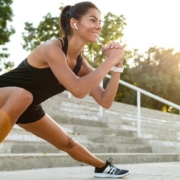
Table of Contents
Can You Overdose on Buprenorphine (Suboxone®)?
You just used a lot of heroin. It was more than you had ever used before, but something about the high was different. It felt amazing, more than usual, but you then woke up in a hospital bed.
Now you’re looking for treatment, and you hear about this medicine called Buprenorphine (Suboxone®). You’ve heard a bit about taking medication for addiction, but you’re probably a little nervous about it. One question that many ask is: Can you overdose on Buprenorphine (Suboxone®)?
We will answer that and also discuss what medication-assisted treatment is as well as Suboxone® treatment.
Medication-Assisted Treatment (MAT)
Medication-assisted treatment, or MAT, is a form of treatment that uses different medications to ease the pain of withdrawal symptoms. This is ideally used in combination with therapy to take a “whole-person” approach to treatment. MAT has been proven to be effective as it has:
- Improved patient survival
- Increased patients’ ability to gain and keep employment
- Kept patients in treatment
All of the medications administered by physicians are approved by the Food and Drug Administration (FDA) and are meant to address the needs of the patient. There are several different medications used in MAT, but Buprenorphine (Suboxone®) is different from the others.
What Is Buprenorphine (Suboxone®)?
Suboxone® is actually a mix of buprenorphine and naloxone and is administered by physicians for medication-assisted treatment. It is mainly used to treat patients with opioid use disorder (OUD). The active substance in Suboxone® is buprenorphine, and the buprenorphine acts as a partial opioid agonist. This means that it works like an opioid, giving the same effects, but it also has a “ceiling.” Because the effects are only partial, they can’t reach the same level other opioids can reach, which reduces the risk of misusing it. It also lowers withdrawal symptoms and the craving for opioids.
Naloxone works as an opioid antagonist (blocker). This is activated if someone decides to inject Suboxone® instead of taking it by mouth. Injecting naloxone will cause very uncomfortable withdrawal effects and can discourage one from the injection of Suboxone®.
What Makes Buprenorphine (Suboxone®) Different?
Buprenorphine (Suboxone®) is different from other medications in MAT because it is the first medication that can be prescribed by physicians. Normally, medications would be given at treatment centers as part of the treatment plan but would usually end after the treatment program. Buprenorphine (Suboxone®) can be prescribed and dispensed by physicians at their offices and outside of treatment programs. This increases access to treatment greatly.
How Do I Qualify for Buprenorphine (Suboxone®)?
Whether Buprenorphine (Suboxone®) is right for you can be discussed with your physician or the medical professionals at ReVIDA Recovery®. They will assess your needs and decide if Buprenorphine (Suboxone®) is the medication needed. You will need to have stopped taking opioids for 12 to 24 hours and be in the early stages of opioid withdrawal.
Once a patient is taking Buprenorphine (Suboxone®) and no longer has cravings, while also not experiencing a lot of side effects, the dosage can be changed. This is only if needed, and this can also be switched from taking a dose each day to taking it every other day or every two days. Recovery is taken one day at a time, so the length of time for Buprenorphine (Suboxone®) use varies from patient to patient. This is an ongoing treatment process in order to prevent relapse, so it can be indefinite.
Myths About Buprenorphine (Suboxone®)
There are several myths about MAT, some about the validity of it as a treatment and some about the myth of it not being covered by insurance. These are damaging myths, but one of the most damaging is that these medications are addictive and trading one addiction for another. These myths have carried over to the medications as well. There are a few big myths about Suboxone® that must be addressed.
Myth: Buprenorphine (Suboxone®) is Frequently Misused
Buprenorphine (Suboxone®) has the potential to be misused like other opioids, but remember that it is a partial opioid agonist. This causes a “ceiling effect,” which will weaken the effects of euphoria (extreme happiness) felt by using full opioids like heroin. Most of the time, Buprenorphine (Suboxone®) is taken to lessen the symptoms of withdrawal, not to get high.
Myth: Buprenorphine (Suboxone®) Should Only Be Taken for A Short Time
Buprenorphine (Suboxone®) can be taken as long as the patient needs it. Every patient is different, so some patients might be taking Suboxone® for a shorter time frame than other patients, but their collective journeys are valid. Recovery is an ongoing process, and it is important that the patient is able to maintain their recovery, no matter what. While physicians debate the length of Suboxone® treatment, no official studies have confirmed that it needs to be taken for a short time frame.
Myth: You Aren’t Really Recovering
Yes, you are. You are still recovering when taking Buprenorphine (Suboxone®). It is medicine for a long-term condition, much like someone with depression might be prescribed Zoloft. Many people have well-adjusted lives while taking medicine for long-term health disorders. The less stigmatized (tarnished) taking medication for addiction is, the more that people struggling with addiction will feel comfortable.
Myth: It’s Very Easy to Overdose Taking Buprenorphine (Suboxone®)
Buprenorphine (Suboxone®) has a built-in ceiling effect, meaning there is a point where the feeling of euphoria (the high) just levels off. This means there’s a very small risk of one overdosing while taking this medication compared with other opioids like heroin and morphine. An overdose is something that typically happens if someone is mixing Buprenorphine (Suboxone®) with other substances, such as sedatives that slow down breathing.
Treatment at ReVIDA Recovery®
The mission of ReVIDA Recovery® is to provide premier care for our patients. We offer structured treatment plans that include MAT while prioritizing outpatient treatment.

What Is Outpatient Treatment?
Outpatient treatment is a form of treatment where patients will attend the treatment center for sessions but go home afterward. This is much less of a financial burden while providing the same quality of care. This is a great form of treatment for patients who are working or have obligations outside of treatment. For patients with a great support system, this form of treatment works best. During this treatment program, you will have a couple of different forms of therapy: one-on-one therapy and group therapy
Cognitive Behavioral Therapy (CBT)
One of the most effective forms of therapy, cognitive behavioral therapy (CBT) aims to make patients aware of distorted thinking patterns while learning how to change those as well. This can prepare patients for different stressful situations and teach them how to respond to them.
CBT’s goal is to change two patterns: thinking patterns and behavioral patterns. To change behavioral patterns, CBT will use different strategies. These include: facing one’s fears instead of avoiding them, learning how to relax the body and mind, and even role-playing for certain stressful situations.
In order to change thinking patterns, the strategies include: using problem-solving skills to cope with tough situations, gaining a better understanding of the motivation and behavior of others, learning to recognize patterns in one’s own warped thinking and changing those thoughts in light of reality, and learning to develop more self-confidence.
CBT often has “homework.” In CBT, these are activities done outside of the session. Each patient has different homework, and it can be as simple as reading a book, writing a feeling down, or can even be role-playing to prepare to talk to someone who may trigger you.
Called the gold standard of therapy, it is what most people think of when they hear the word, “therapy.” It has been used to help treat several mental health disorders such as depression, anxiety, and post-traumatic stress disorder (PTSD) and can be very helpful to those struggling with addiction.
Group Therapy
Often, there is a stigma — a negative and often unfair belief — attached to addiction. It can feel like you are on an island by yourself. But you are not alone. Group therapy shows this very well. This form of therapy helps lessen the stigma of addiction and can help patients see that addiction is not only common but diverse.
Group therapy is a great type of treatment for patients that are starting to mingle back into society. Because of the group setting, interpersonal skills are learned naturally. Patients will have to listen to each other, wait for their time to talk, and may have to learn how to receive help from other patients.
Different patients might have gone through the same thing another patient is going through right now. Those patients can provide insight and perspective on that issue. This also shows the diversity of addiction. There are plenty of different people that struggle with addiction, and group therapy shows how every person from every background can struggle with it.
Reclaiming Your Life at ReVIDA Recovery®
ReVIDA Recovery® is here to help you on your journey to recovery. Our mission is to empower people so they can reclaim their lives from opioid use disorder. Located within 10 miles of Johnson City and Knoxville, Tennessee, ReVIDA Recovery® offers individualized premier care in the form of outpatient programs and medication-assisted treatment, and we aim to provide excellent service for each and every one of our patients.
Call (844) 972-4673 to start your journey and reclaim your life.









